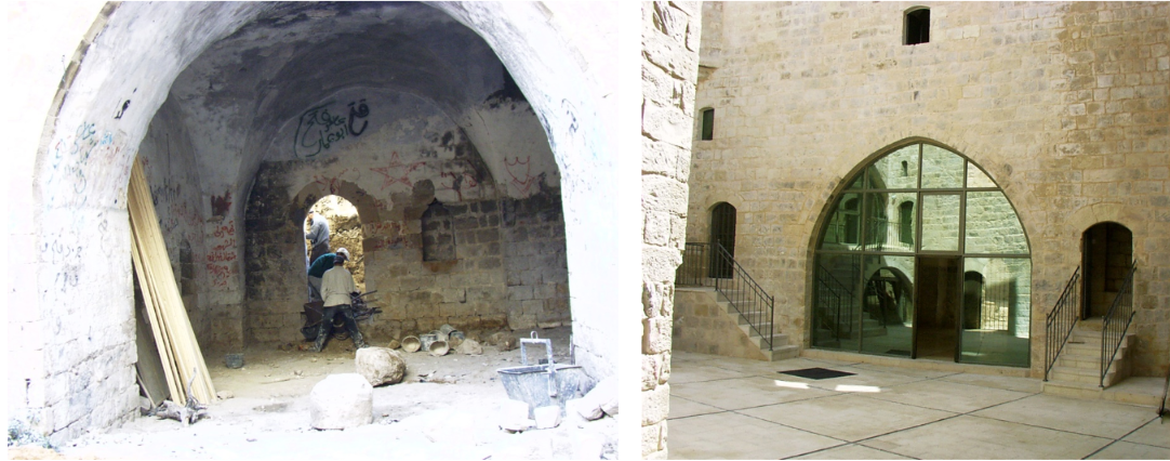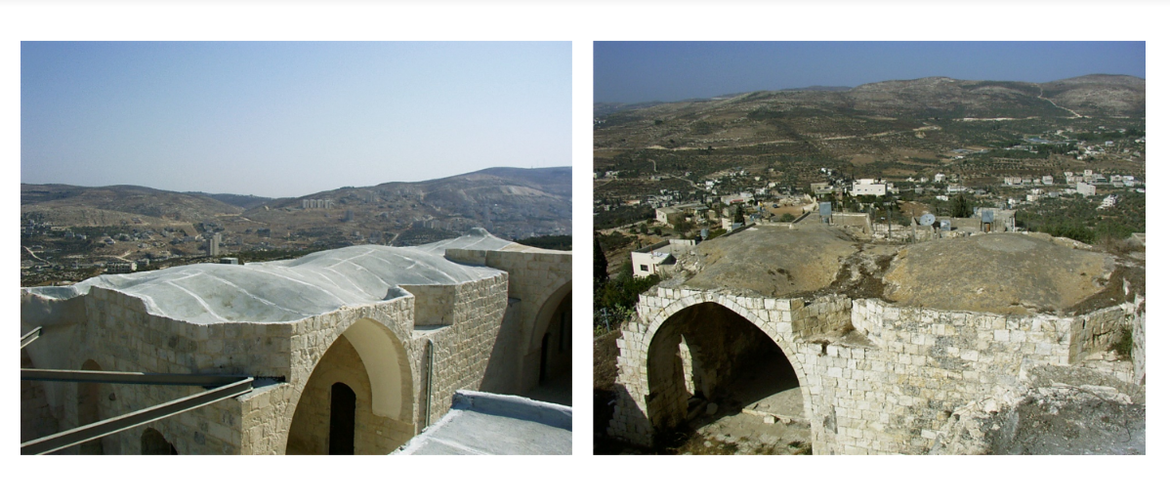Al-Qasem Palace: A Heritage Revived
Constructed nearly two centuries ago, Al-Qasem Palace stands as a testament to Palestinian heritage in a small town west of Nablus. Originally built during the Ottoman era, this remarkable structure narrowly escaped ruin after years of neglect left it close to collapse. Though it was once on the verge of becoming a dumping ground due to local residents’ lack of resources to restore it, Al-Qasem Palace has since been revitalized. Thanks to An-Najah National University, the palace now reflects the rich heritage of the Palestinian people, transforming into a cultural landmark that draws visitors from far and wide.
Our initial visit to Al-Qasem Palace coincided with the arrival of an Italian delegation touring the West Bank. Starting in Jericho and concluding at this historic site near An-Najah’s new campus, the group included approximately thirty experts from Palestine and Italy. As they explored the palace's intricate architecture and precisely restored design, the Italian experts expressed admiration for the meticulous restoration efforts that had preserved the palace’s authenticity. An-Najah’s team had invested significant time in planning this restoration, which, judging by the awe of first-time visitors, was a resounding success.
Situated in the ancient village of Beit Wazan, Al-Qasem Palace is not only the largest structure in the village but also its most culturally significant. Built by Sheikh Qasem Al-Ahmad in 1820, it is sometimes referred to as the "Sheikh’s Palace." The structure is notable for its four floors, surrounding a tiled courtyard, and constructed using traditional Palestinian techniques. Its stone walls, cross-vaulted arches, and decorative woodwork highlight the skilled craftsmanship of that period. The ground floor includes guest rooms and guard rooms, while the upper floors served as living quarters and government spaces, featuring unique architectural elements like transverse domes and intricately carved windows.
Prior to its restoration, Al-Qasem Palace was in disrepair, with broken doors and windows, and walls riddled with cracks from earthquakes that had struck the region. To revive this architectural jewel, An-Najah National University launched a comprehensive restoration project aimed at transforming the palace into a center for cultural heritage studies and preservation research. The restoration has had a broader impact, creating local job opportunities, enhancing village infrastructure, and supporting community development. The project also includes training in preservation techniques and supervisory skills, further stimulating economic growth and social engagement.
The restoration aimed to faithfully restore the palace to its original grandeur, with minimal modern interventions limited to essential areas to ensure its sustainable use. The ground floor now houses exhibition spaces, a reception, and a small café. The first floor features a library and staff offices, while the upper floor provides spaces for discussions, lectures, and additional offices.
Today, Al-Qasem Palace stands proudly, a revitalized emblem of Palestinian history and heritage, welcoming delegations from around the globe and serving as a model for preservation efforts across Palestine.


